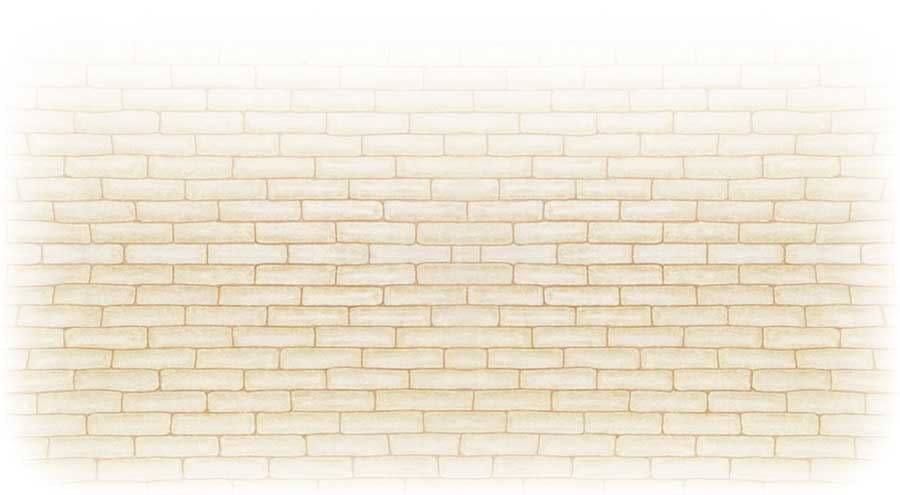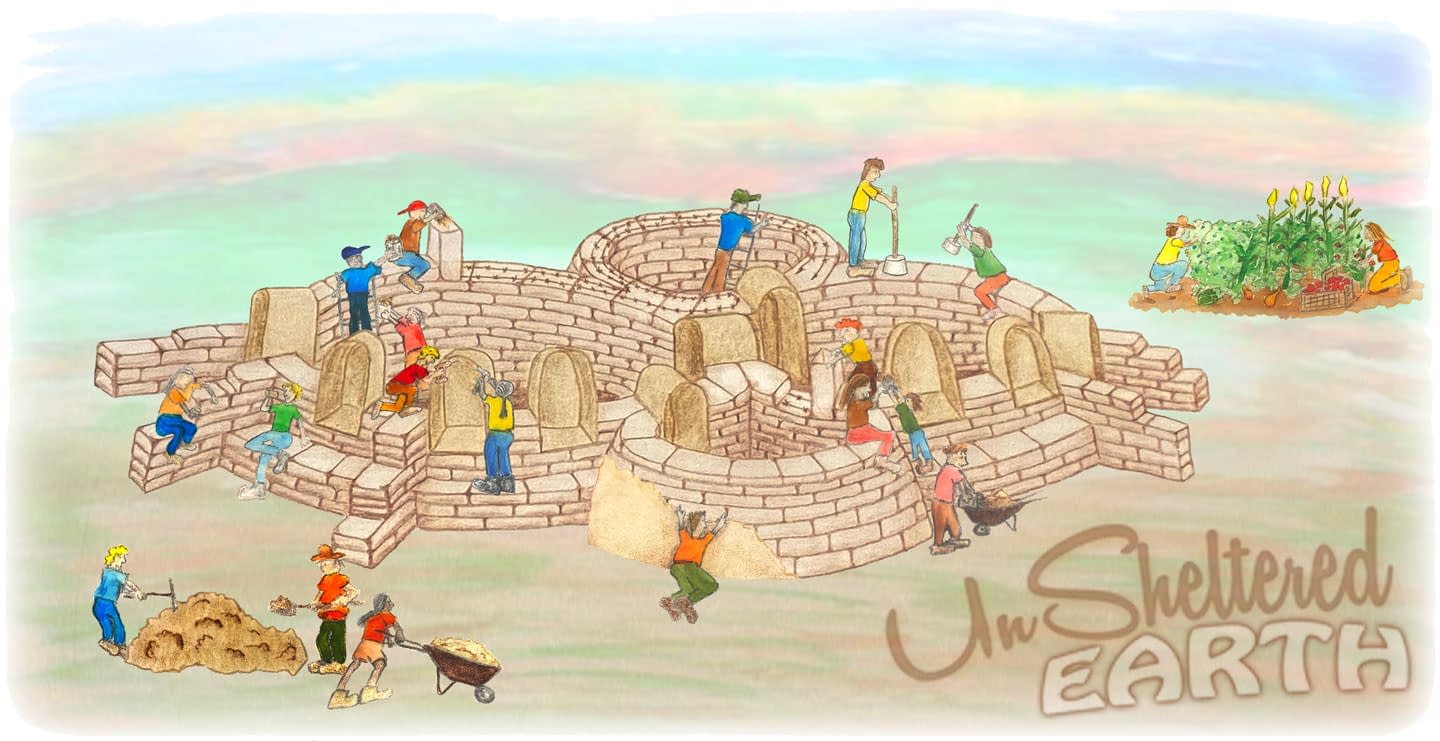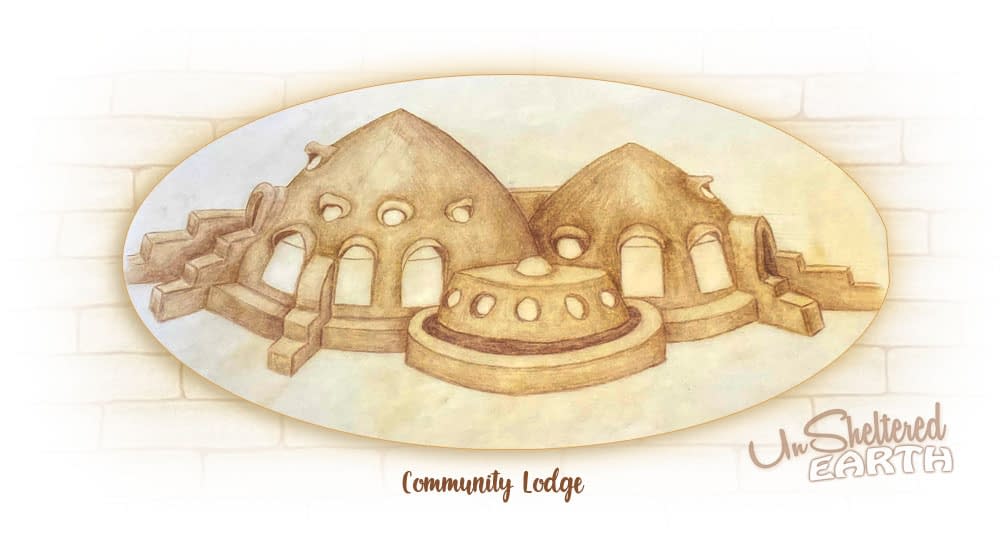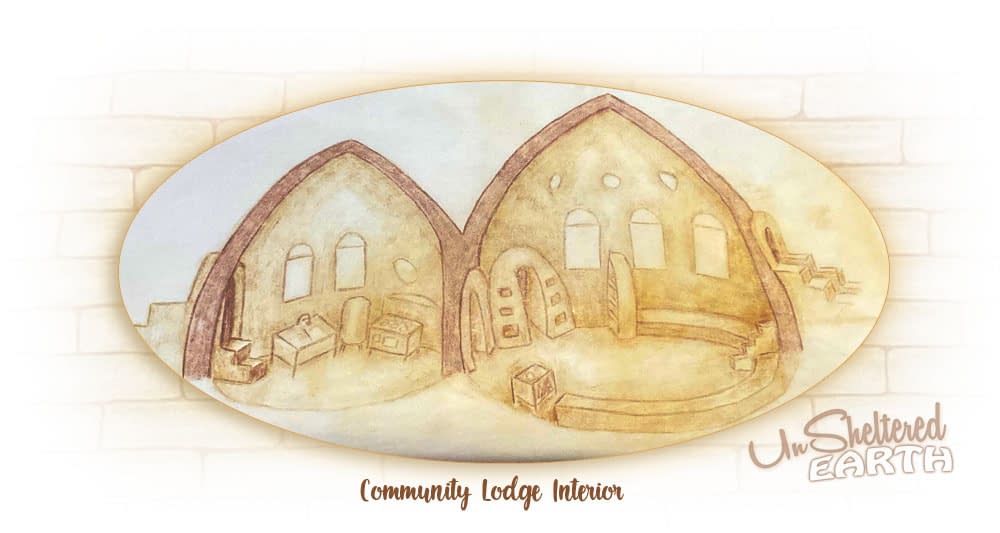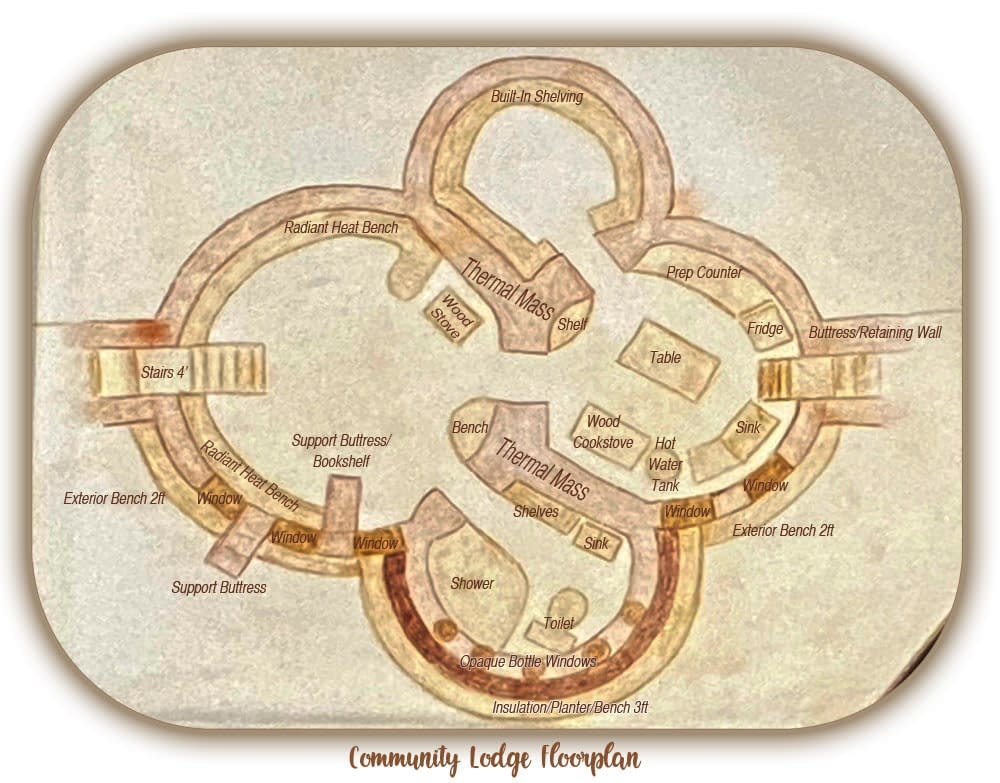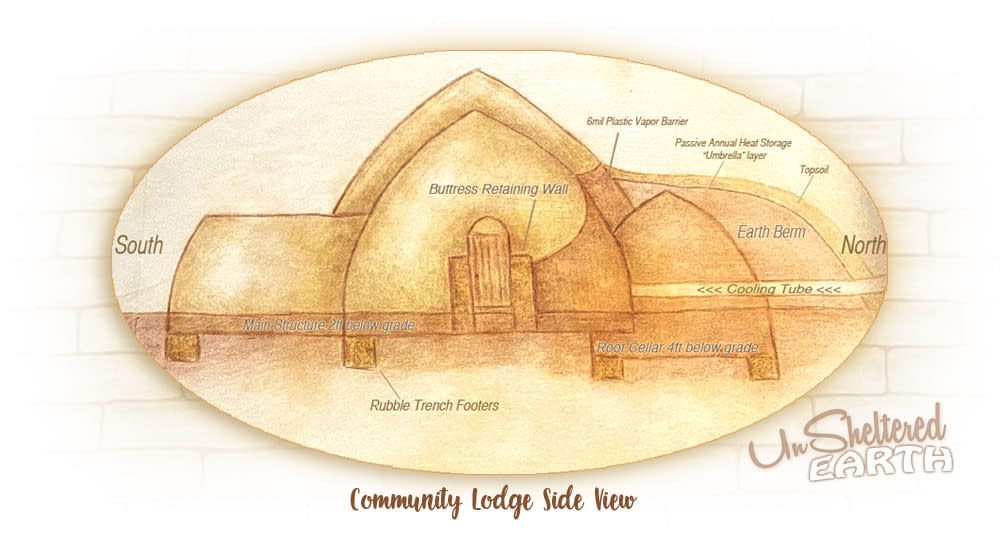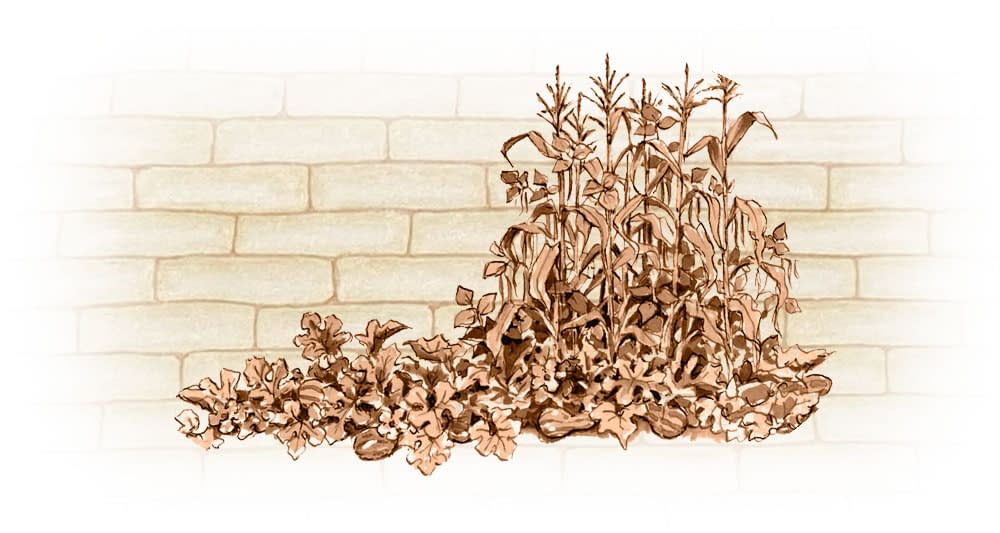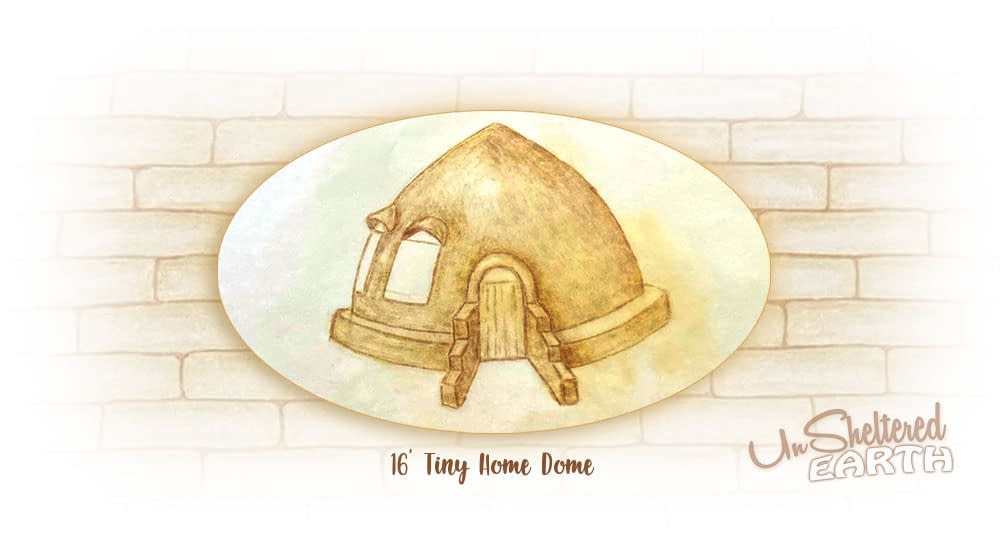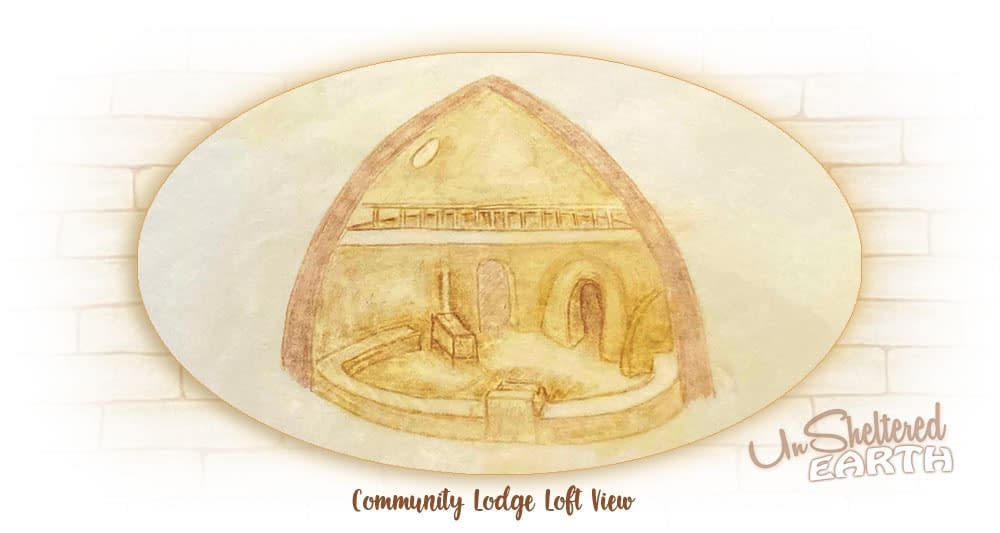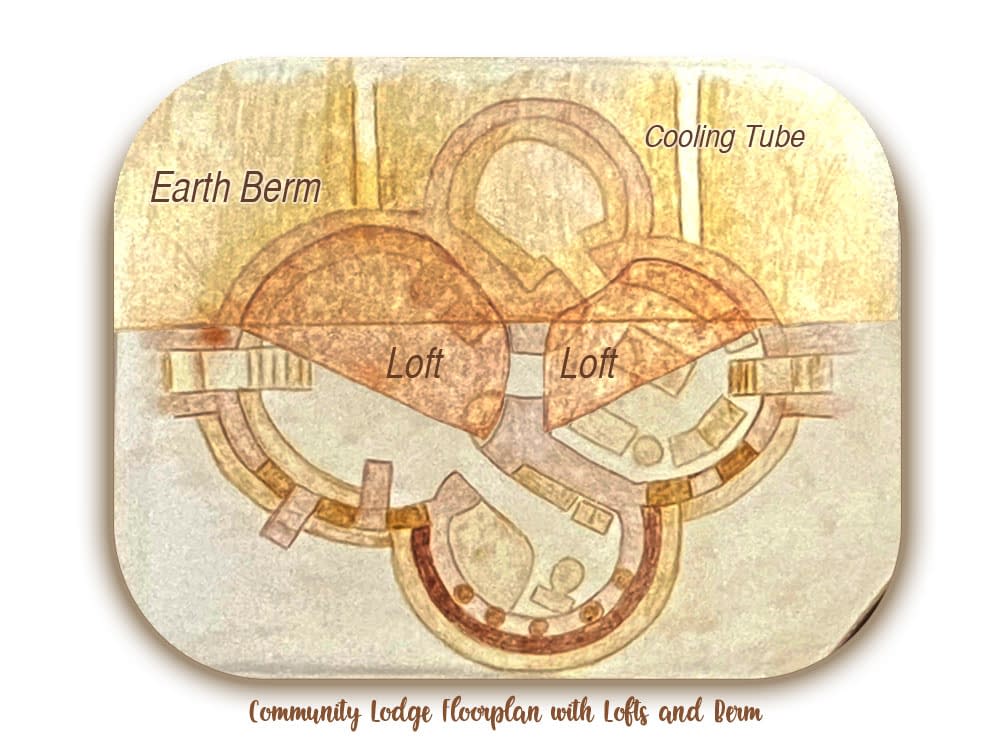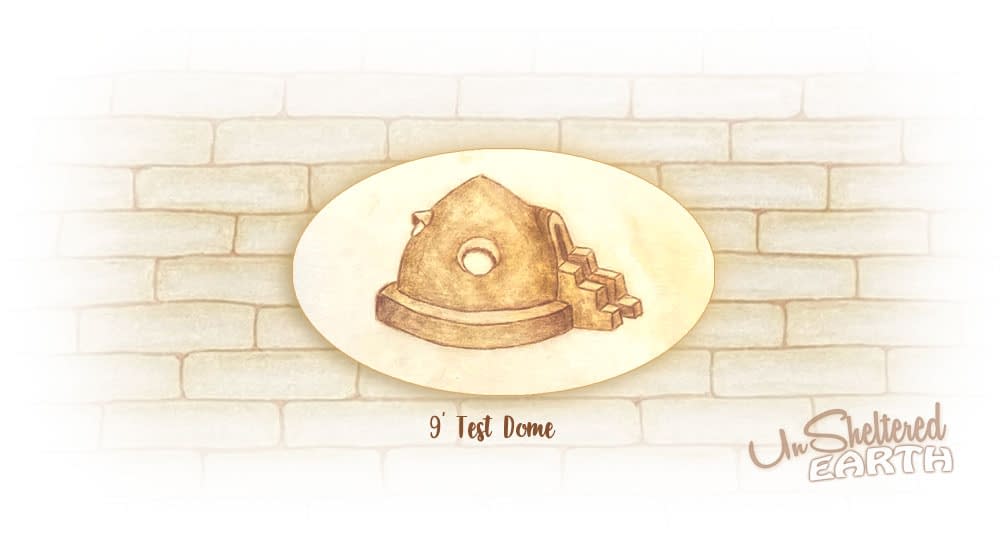EarthHouse 55
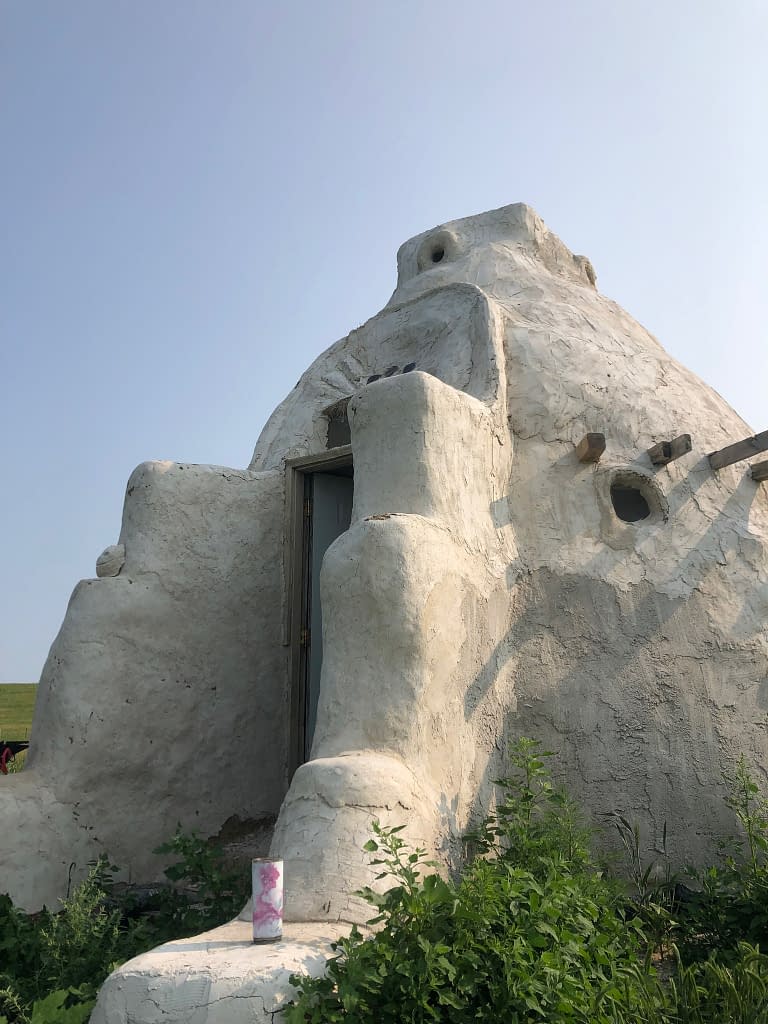
Check out our Facebook page for all the photos
We’re building an earthbag village on Rosebud Reservation, and we want you to join us.
Our planet is undergoing a massive transformation. Our people must evolve the way we live upon her if we are to survive the coming changes. It’s time to shift from fighting against a broken system to creating one that works.
Millions are already living unsheltered, a population that’s seen drastic growth throughout the past year of financial hardship, civil unrest and ecological collapse. We’re amid a pandemic of homelessness that has spread into communities well beyond the poverty line.
In a country with six times the number of empty houses than homeless, the problem is not lack of housing, the problem is a system that values the banks and Wall Street over the life quality of our least fortunate. The exploitative nature of the rent and mortgage system simply funnels the wealth to those who already possess it, as the rest who are struggling to survive are only cast further into the shadows.
Our project aims to level that playing field as we strive to ensure that every human being is allowed a place to exist. Access to food, water and home are fundamental human rights, given to us by the Earth, no manmade law can take these away from us.
It’s not up to us to reclaim the Earth for humanity, it’s up to us to reclaim humanity for the Earth.
Check out our Facebook page for all the photos
An earthbag home may seem primitive at first glance, but not only has this ancient technology evolved to incorporate all the modern amenities of conventional construction, an earthen home is actually quite superior in many very critical ways.
Earthbag homes have not only passed California’s earthquake code requirements, they’ve outperformed the test equipment itself, offering a compressive strength ten times that of stud-frame construction.
The thick walls, subterranean foundation and domed shape create a structure that doesn’t obstruct the flow of wind and water, or tornadoes and hurricanes, and the thermal qualities of those same features utilize the mass of the Earth to efficiently maintain a comfortable living temperature, in many climates completely eliminating the need for supplementary heating and cooling.
The elegant simplicity of earthbag construction creates a flexible workflow perfect for the rotating nature of a volunteer crew.
The process is quick to learn and benefits from every hand involved, regardless of prior construction abilities. After just a week of involvement, volunteers will understand the basic concepts required to construct a low-impact, high-resistance home out of locally sourced materials.
The quick learning curve of a low-cost construction will create a spiderweb effect, a self-replicating model that will begin to fill the growing need for community, as together we navigate through a housing crisis wrapped in an unpredictable ecological transition.
Why Rosebud?
Rosebud is like most reservations, not the fairytale cartoon many have been led to believe, but an existence rife with poverty and generations of handed-down oppression.
Alcoholism, addiction and suicide plague the native populations around the country, a country that seems to have forgotten the true cost of doing business. As settler colonialism stripped them of their traditional connection to the Earth, they were forced into a consumer-based way of life, unable to live with the land in a sustainable way, the only sustainable model our country’s ever known.
The housing available is in poor repair, extended families crammed into FEMA trailers, and people wait for years on a list for one of the few new constructions each season. The climate in South Dakota is extreme on both ends of the spectrum, not an easy place to survive unsheltered, and only through the tightly held understanding of community has the Lakota culture managed to flourish through adversity.
This site is merely a place to collaborate with volunteers and organize supplies, our goals are simply to assist the local non-profit organization Lakota Child and Family as we help their vision come to life. We’ll be working closely with both native elders and youth, as only an indigenous-led movement can truly assess the needs of their own people. Real change must come from within, but the rest of us can be there to offer love and support as we equip them with the tools necessary to begin that healing process.
The houses we build will not be workshop demos or villas for the affluent, they will be lived in and tended by some of those most affected by the relentless consumption of imperial colonialism, a system that most of us have undoubtedly benefitted from throughout the generations.
It’s hard to understand the depths of that privilege, or how to do anything about centuries of oppression, how to possibly begin to heal the wounds that were the cost of our stolen freedom. Well, maybe this is how.
Earthen shelters aren’t some new age idea.
They’ve been used for millennia by indigenous communities and industrialized nations alike, with many outlasting the civilizations themselves.
Earthbags in their current form were developed for NASA as a way to build shelters on the moon using the only locally available building material, lunar soil. They’ve since seen an evolution of improvement as a passionate global community has adapted the technique to suit every life-sustaining climate on Earth.
Often providing disaster relief and resistance to those on the frontlines of climate catastrophe, but also a building style incorporated by groundbreaking architects whose modern designs take full advantage of the curved earthen aesthetic.
Each bag is filled with a mixture of moistened sand and clay as it is laid into position along the wall.
Once an entire layer has been placed, all of the bags are tamped tightly together, interlocking the jagged sand particles as the clay glues them into an adobe-like brick, a building block no longer reliant on the support of the bag.
Now add two strands of barbed wire to act as a “velcro strip” as they provide tensile strength, and repeat, resulting in a monolithic structure capable of withstanding the harshest of environmental challenges.
Straight and square walls are easily achieved for a more conventional appeal, but we’ll begin with a focus on round domes to get the most structural integrity available through this process.
A dome is the strongest shape on Earth.
It is the most efficiently climate controlled as energy flows in spirals, unimpeded by vibration-dampening corners and unused attic spaces.
And a single building process from floor to ceiling is not only the most cost effective, but also makes possible a one-person build, as the basic technique is the same from start to finish, although we’re hoping not to do this one alone.
But even if we do, that’s the beauty of the whole thing, the simple assembly line can easily incorporate dozens of untrained helpers at once, but can also function adequately with just a couple of us.
The flexible scope of the project will determine its own span, the greater the interest in community-built housing, the larger the community crew at our disposal. And if it’s just a few of us for phase one, that’s perfect too, as we’ll only need to construct a handful of houses during our first season.
In many cultures, the people come together to build a home for each new family that blooms into the community. This way of life not only sets everyone up for success along their own journeys, it also fosters a sense of communal togetherness that has always been critical for the health of humankind.
Earthbag homes already exist on every continent.
On ours they’ve been most extensively tested in the arid climate of the southwest, but all the way into Canada we’ve seen successful earthbag builds. While we know they will perform far beyond a collapsing FEMA trailer, we will still need to adapt some of the particulars to our unforgiving climate.
Last year we built a 12 foot dome to serve as a testing ground for various in-bag soil mixes, stuccos and plasters, earthen floors, and finding a suitable equilibrium between thermal mass and insulation. Our next build will likely be a twenty foot dome as we adapt our technique and prepare for a multi-dome build.
Check out our Facebook page for all the photos
Our community will be centered around the kitchen lodge, both physically and in a more philosophical approach to communal unity.
A space to eat and meet, and bathe, a model of a 1000 square foot home featuring multiple domes and available options, and a safe haven of warmth with a central wood stove and wood-fired kitchen. Featuring a main dome twenty feet in diameter with a sleeping loft, a sixteen foot kitchen with a smaller storage loft, a twelve foot attached root cellar and a twelve foot bathroom and shower space.
The lodge will be sunken two feet into the Earth and Earth-bermed another twelve feet on the northern side, using an underground “umbrella” to create a PAHS (Passive Annual Heat Storage) “battery,” a large mound of Earth which will naturally store thermal energy and slowly release heat in the winter and coolness in the summer.
Large windows on the southern exposure will collect passive solar gains, helping to charge the bermed wall on the north, as well as the earthen adobe floor. Two additional columns of thermal mass are centrally located where the domes interlock, with wood stoves intentionally positioned to charge them throughout the winter, as well as a radiantly heated bench that runs the circumference of the main lodge.
Thermal mass takes advantage of the Earth’s constant subterranean temperature to moderate a livable indoor climate.
It’s a critical component of our design, and one which will be just as important in the summers that often top a hundred degrees. Entranceways to the East and West will allow cross-breezes to flow, and cooling tubes that extend into the Earth berm will offer convection-driven fresh air, further utilizing the Earth’s energy storage capabilities.
We’ll be implementing a lot of other systems along the way, remaining flexible as various expertise and resources become available, but always striving to salvage and upcycle as much as we can, while living as ecologically responsible as possible.
We aim to be preparing meals on a “Home Comfort” style antique cookstove, which will also heat water for the kitchen and possibly the bathroom as well, with passive solar water heaters filling in the gaps.
We’ll build a cistern and begin water catchment, incorporate greywater systems to reuse and recycle our water to its full capacity, and we’ll explore whichever sources of localized electricity seem to mesh with the project as it takes on a life of its own.
Earthen homes are alive, the walls breath as they naturally maintain indoor humidity levels, the microbiomes of the soil remain intact, as those who symbiotically hold space return to their naturally codependent relationship with the Earth.
Food sovereignty will be another primary focus.
As with most rural communities, the reservation has little access to a healthy and organic food supply, and what is available is overpriced and simply not an option for a population focused on day to day survival.
With food being such a fundamental element of our existence, it’s unnatural to have become as disconnected from it as we have, and only through a rebirth of our relationship with the Earth will we experience the wealth of abundance she has to offer.
Here we will tend the garden together as we share in community meals. When food is held sacred, all of life is held sacred.
In addition to summer gardens, we’ll be incorporating the knowledge of indigenous food systems and modern day permaculture, a vast catalog of wisdoms that regenerate the Earth as they regenerate ourselves.
Phase two of construction will include a greenhouse attached to the southern exposure of the community lodge, which will at the same time create a temperature buffer zone and expand our passive solar capabilities.
We’ll also use earthbags to build a walipini, an underground greenhouse that utilizes the same thermal mass properties to drastically extend the growing season. These have been very successful in nearby Nebraska, where they’ve grown decades-old citrus trees throughout the sub-zero winters, plus it will give us a nice big pile of dirt to work with.
So now it’s time to get involved.
And remember that it makes no difference your skill level, age or size, this is a project of many hands and each one will make change.
The gratification that comes with a successful build is immense, and the sense of purpose discovered along the way will consume the voids left by a hollow society, a pathway to healing that is essential in overcoming the addictions that artificially attempt to fill that emptiness.
Our community is one of sobriety, a safe space for those in recovery, a family of support as we tend to the wounds and traumas among us. So keep this in mind as you plan your trip, but also know that we are far from a crew of uptight sticklers, and we can pretty much guarantee a good time.
This is an opportunity to broaden your understanding of what it means to live in a good way, to more clearly see the pitfalls that have gotten us to this point, and to bring clarity to your own vision of a brighter future.
This is not a workshop. But you will come away with a toolbelt of firsthand knowledge and plenty of hands-on experience.
This is not a cultural learning excursion. But you will be fully immersed in the least foreign of cultures, surrounded by the most incredible people and passions, deep conversations and handed-down stories will be shared, you will be changed.
This is not a spiritual retreat. But the spirit is alive on the reservation. Profound shifts in your understanding of the world will be born. The connection isn’t confined to one day a week out here, it’s a way of life.
This is not an environmental protest. But you will be among those who have committed their lives to protecting the Earth, many of them frontline activists. You’ll learn of so many ecological issues that don’t cut through the mainstream, and new ideas of how we can begin the mitigation process. This is an opportunity to shift from fighting against a broken system, to creating one that works.
This is not a decolonization camp. But you will move on with a new perspective of American history, the American present, and a new vision of the future we can only build together.
This is not a vacation. But it’s sure gonna feel like one.
We’ve met so many folks along our travels who want to be involved in manifesting the next steps of our collective journey.
Who want to deepen their connection to the ancestors that compose our planet.
Who yearn to do something about the social inequalities in housing, food, and standard of living.
Who seek to apply their creative energy towards reviving our home.
Those who want to consciously take the steps required to use their privilege to dismantle their privilege, or to at least share a bit of it.
This project is a way to do all of these things, plus it’s gonna be a really good workout.
We want everyone who feels called to be a part of this project to have the opportunity, but we also want to be mindful of the community who is hosting us as we respect their way of life. We can’t simply post the address with an open invitation to the entire internet, so we ask that you reach out and let us get to know you a little before you come on board.
We anticipate the majority of our volunteers to be folks that our crew has already met along our travels, in which case a simple reference to where we met you should be enough to get you on the list, and definitely mention it if you’re a Water Protector.
But if you’ve not spoken with us already then we still want you to be a part of our project, so just tell us a bit about yourself and why you feel drawn to join us.
We’re not a non-profit organization.
We’re a non-money organization, as organized as we can be anyway. Our goals are simply to put together a team of volunteers and gather as many repurposed supplies as we can, leaving the monetary incentive behind lets us be free to follow the road less traveled.
We’re also not blind to the economic reality we’ve yet to move beyond. While these houses are far less costly than conventional construction, and we’ll be salvaging as much as we can, these homes will still cost a bit to build, plus we’re going to feed the workers at this all inclusive getaway.
Unsheltered Earth is just a forum for sharing our vision and facilitating collaboration, a model that could be repurposed for similar projects all over, and this first one in Rosebud is in conjunction with Lakota Child and Family, a locally based 501c3. Founded by members of the Rosebud Sioux Tribe, or the Sicangu Oyate, they will be our native leadership as we work together to bring their vision to life.
They’ve already got the ten acre section of land waiting for us, they’re deeply rooted in the community we’ll be serving and know just who needs us the most. They’re happy to handle all the paperwork, and permits, and donations, and receipts, and all that kinda of stuff, that way we can focus on digging our way out of all that kinda stuff.
So… Really we just want your help. For you to cover your own travel expenses and volunteer to work really hard, for free. For free, as in you don’t have to pay a dime for this once in a lifetime experience, and we even want to feed you some proper campfired cuisine.
And if you can’t come but still really want to be involved, we’d love some help with gathering supplies, maybe researching deals on misprinted bags, or introducing us to your cousin who works at the barbed wire factory. We’re mainly just a group of Earth lovers who would rather be out in it, so any help on the computer end of things is much appreciated.
Supplies we’ll need.
Earthbag building is far less resource intensive than conventional construction, but we’re still going to need quite a bit of stuff to get us started. Our goal is to reclaim and upcycle as much as possible, locally whatever we can but also carried in with volunteers, and to source materials in an ecologically conscious manner.
We repurposed a lot of what we needed for our first build including our bags, and had most of our other supplies gathered by some of our volunteer teams, the only materials we had to buy were some barbed wire and lime, just $550 not including our tools!
We won’t need much to finish the cob and floor of our first house, just some linseed oil for the floor and lime for the plaster. We’ll need a few items before we can start on our second house, wheelbarrows and hoes speed us up quite a bit when we have a big crew, some more 22″ bags and tubes and another 2 rolls of 4pt barbed wire, and that’s pretty much it, everything else we need seems to be able to manifest along the way pretty easily.
- Our favorite website for this kind of stuff is www.earthbagbuilding.com
- Our favorite YouTube channel is My Little Homestead
- Here’s a beautiful photo gallery of another earthbag village concept
- Or if that’s too much homework for you, then you can check out the fictional novel Liberation’s Garden, a free download featuring earthbags, activism, and life on the reservation. Authored by one of our core members, it holds a vision for the future as we take the first steps toward bringing that vision to life.
- And now you can feel even more a part of the nitty gritty dirt life with Stylish Transient!

